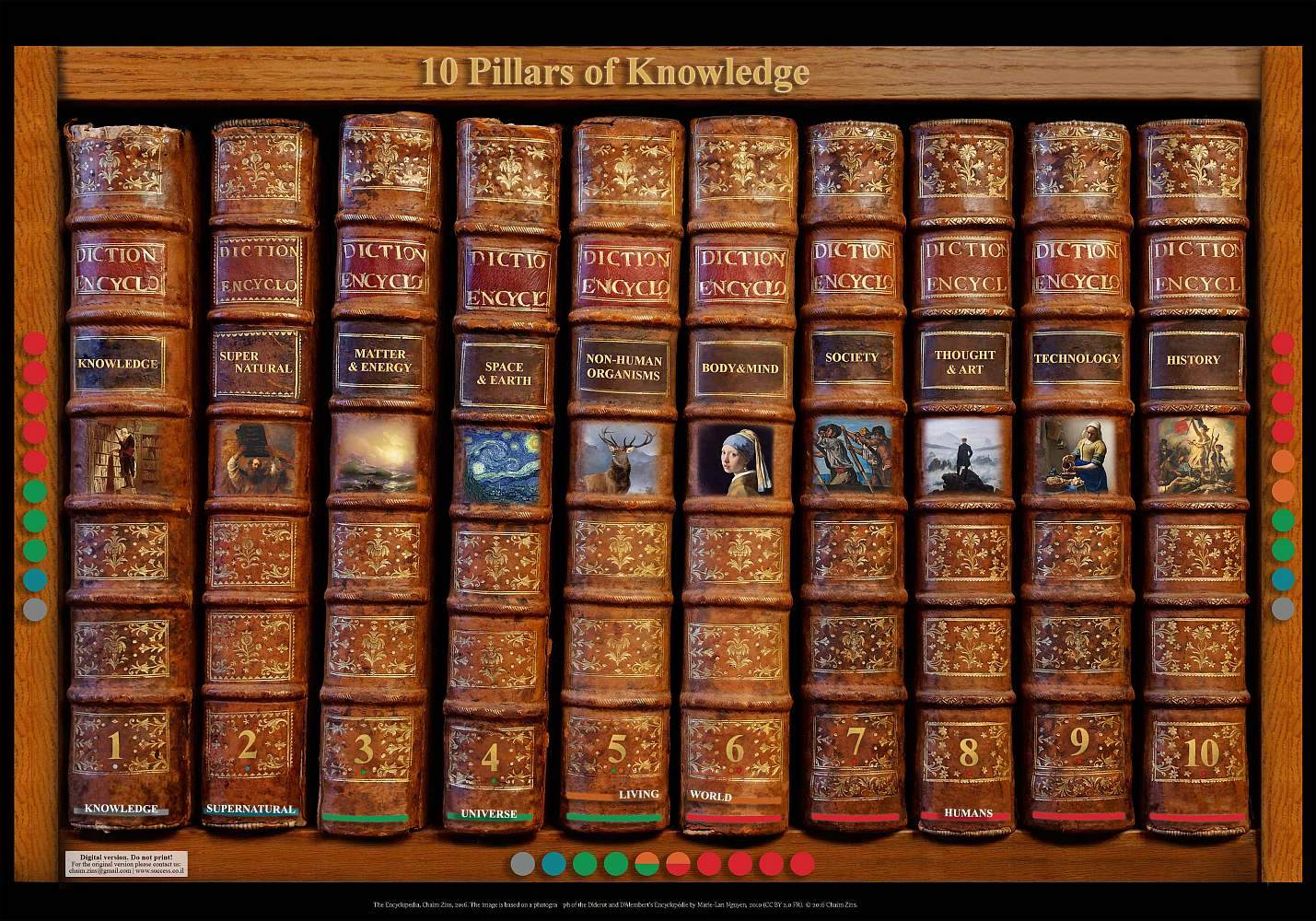The Encyclopedia | Chaim Zins
The Encyclopedia is an abstract (an overview) of the 10 Pillars of Knowledge map (10PK).
Human knowledge is composed of 10 pillars (parts) that include all the fields that establish our cultural and scientific heritage.
The 10 pillars are: Knowledge | Supernatural | Matter & Energy | Space & Earth | Non-human Organisms | Body & Mind | Society | Thought & Art | Technology | History.
• Foundations studies human knowledge.
• The Supernatural concerns mysticism and religion.
• Matter and energy explores the basics of the physical world.
• Space and earth explores our planet and outer space.
• Non-human organisms explores the non-human living world.
• Body and mind explores the human body and the human mind.
• Society deals with the various aspects of human social life.
• Thought and art studies the products of the human intellect and the arts.
• Technology explores the products of human creativity, which are designed to achieve practical purposes.
• History encompasses human history.
5 super-phenomena. The 10 pillars are grouped into four groups, which explore four super-phenomena: knowledge (pillar 1, gray), supernatural (pillar 2, blue), universe (pillars 3-4-5, green), and humans (pillars 6-7-8-9-10, red). On top of the meeting point between the universe and humans a fifth super-phenomenon emerges, the living world (pillars 5-6, orange). The colors enable to represent both the religious approach, which separates apes and humans, and the scientific approach, which views them as part of the living world.

The three series of balls represent three approaches to mapping human knowledge: a religious approach (on the left side), a humanistic approach (on the right side), and an integrated approach (religious and humanistic, on the bottom).
The images of the books are based on a photograph of the Diderot and D'Alembert's Encyclopédie by Marie-Lan Nguyen, 2010 (CC BY 2.0 FR).
For a printed and a high resolution PDF version please Contact.

